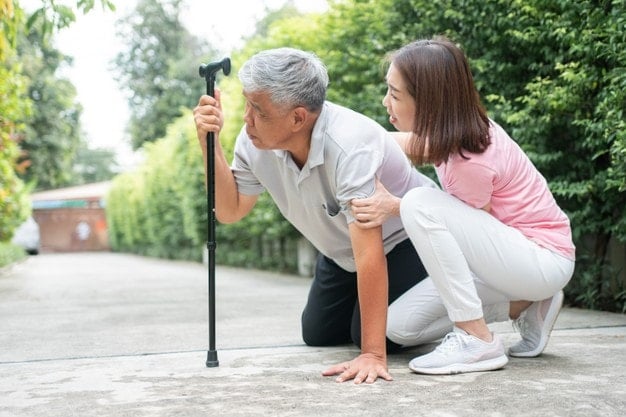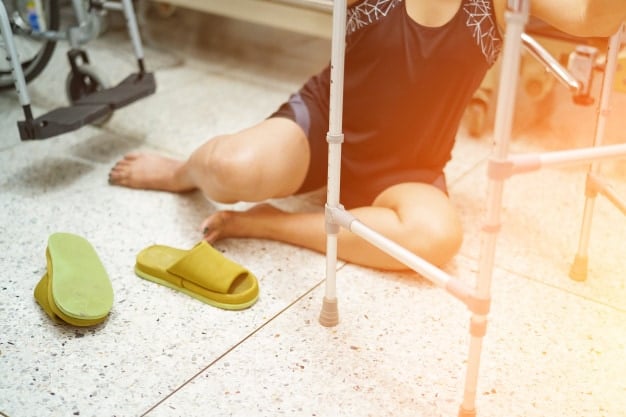Table of Contents
Various organizations around America are on a mission to partner with communities and raise awareness on ways to improve fall prevention among older adults. One of these is the National Council on Aging (NCOA) with their Falls Free Initiative. Every 13 seconds, an elderly person experiences a fall-related injury for which they require treatment. The falls free initiative was designed to prevent as many of these potential injuries as possible.
No one wants an elderly loved one to trip on a rug, slip on a wet floor or lose their balance and fall. Often, it results in a serious injury that is detrimental to their independence and may even lead to disability.
One in three individuals over the age of 65 fall every year, which is why the fear of falling is a real concern among seniors. This can prevent the elderly from venturing out and participating in walking and other social activities.
We should not allow the fear of falling stand in the way of being active, but rather look for ways to prevent falling for our seniors. When you help your loved one to overcome this fear, they can remain physically active and ward off future falls.

Their eyesight and hearing might fail and be one of the leading factors that cause a fall. Others find their reflexes or balance is not what it used to be due to problems with their thyroid, heart disease, or diabetes. Even certain medications make your loved one feel sleepy or dizzy and may result in losing their balance and falling.
There are many internal factors related to falling including gait problems, low blood pressure in the elderly, and muscle weakness. External factors such as wearing the wrong shoes like high heels, loose-fitting flops, or backless shoes can also increase the risk of falling.
Falling accidents rarely happen by chance alone. By helping take care of their health and implementing exercises to prevent falling seniors, you are already going in the right direction to help your aging parent to remain fall free. Following are a couple of tips to avoid falls:

You may be there with them or somewhere else when you receive a call say they have fallen. If this should ever happen to you, remain calm, breathe in deeply a couple of times tell them to stay where they are to get over the shock of falling.
Next, determine if they are hurt before attempting to help them get up. Find out if they hit their head, if they know what caused the fall and how they landed. Take time with the assessment as you do not want to make an injury worse.
If you think everything is okay, find a sturdy chair. If one is not available, crawling to a couch or stairs or other solid piece of furniture may be the next best move. Help them roll onto their side, then slowly get up to hands and knees. From there, have them prop on elbows on the chair or other sturdy surface. Next move to get one foot flat on the ground. Then help them rise up until they have both hands on the chair and both feet flat on the floor. Next slowly turn and have a seat to continue to assess until they feel like they have returned to normal.
If they are too injured to get up or show intense pain with an attempt to get up, call 911 as they will need to be assessed for significant injury in the ER. Be sure they have a cell phone or emergency alert system when no one is around.
Both the CDC and the NCOA have identified falling as the the leading cause of injury death among older Americans. Every second of the day, an older adult falls in the U.S. There are identifiable risk factors and causes for falls which when identified can lead to fall prevention. Listed above are actionable steps we can take to help our loved ones reduce the risk of fall and injury. A quick assessment is needed to determine the next steps if your elderly parent does have a fall.
That's all for today.
Take care, keep mom safe and have a great day!
Winn